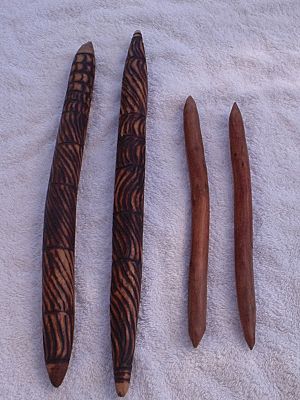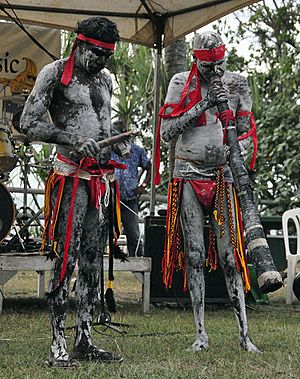Clapstick facts for kids
Clapsticks, also known as bilma or bimli, are traditional musical instruments used by Australia's Aboriginal people. They are simple yet important tools for creating music. Clapsticks help keep a steady rhythm during songs and dances. You will often hear them as part of important Aboriginal ceremonies.
Clapsticks are a type of idiophone. This means they make sound from their own vibrations when struck. Unlike drumsticks, which hit a drum, clapsticks are played by hitting one stick against another. This creates a clear, sharp sound that helps guide the music.
Contents
Where Do Clapsticks Come From?
In northern Australia, clapsticks have a long history. They traditionally go along with the didgeridoo, another famous Aboriginal instrument. The Yolngu people from north-east Arnhem Land in the Northern Territory of Australia call these instruments bimli or bilma. These names show how important clapsticks are to their culture and music.
What Are Boomerang Clapsticks?
Some clapsticks are shaped like a boomerang. These are called boomerang clapsticks. They work much like regular clapsticks, but they can also be shaken. When shaken, they make a rattling sound, adding another layer to the music. They can also be clapped together, just like regular clapsticks.
How Are Clapsticks Played?
Playing clapsticks is quite simple. The main way to use them is to clap the two sticks together. This creates a clear, rhythmic sound. Players hit the sticks together to match the beat of the song. This steady rhythm helps everyone stay together during singing and dancing.
See also
- Clapper (musical instrument)
- Clapper stick



